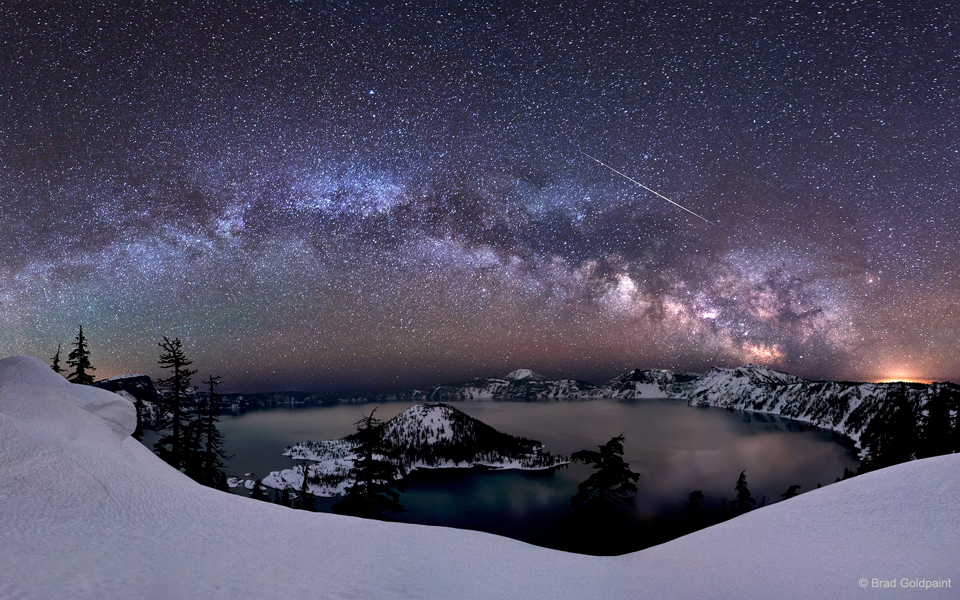
Did you see it? One of the more common questions during a meteor shower occurs because the time it takes for a meteor to flash is typically less than the time it takes for a head to turn. Possibly, though, the glory of seeing bright meteors shoot across and knowing that they were once small granules on another world might make it all worthwhile, even if your observing partner(s) could not share in every particular experience. Peaking late tonight, a dark sky should enable the Lyrids meteor shower to exhibit as many as 20 visible meteors per hour from some locations. In the featured composite of nine exposures taken during the 2012 shower, a bright Lyrid meteor streaks above picturesque Crater Lake in Oregon, USA. Snow covers the foreground, while the majestic central band of our home galaxy arches well behind the serene lake. Other meteor showers this year — and every year — include the Perseids in mid-August and the Leonids in mid-November. via NASA
